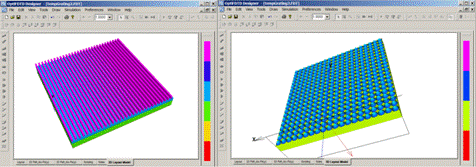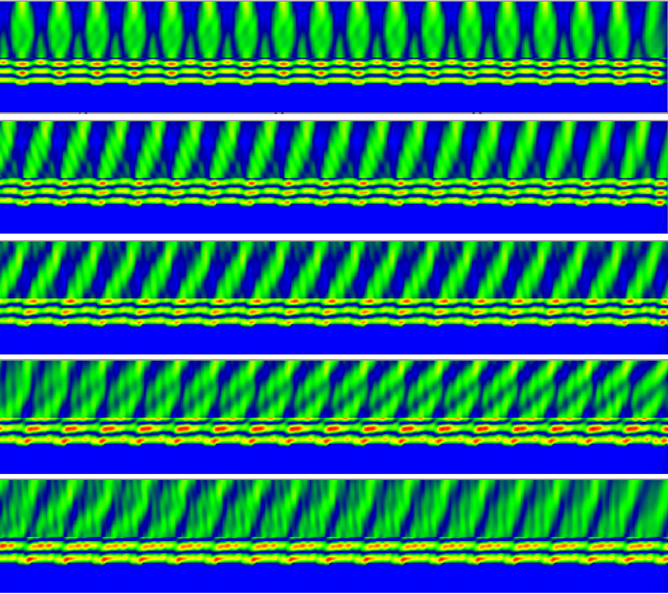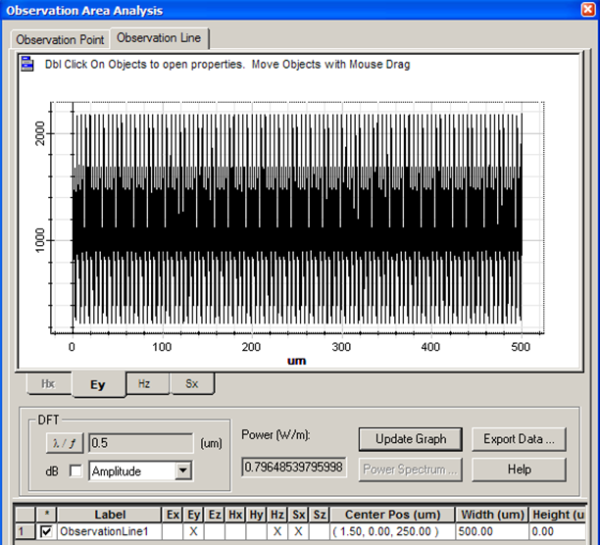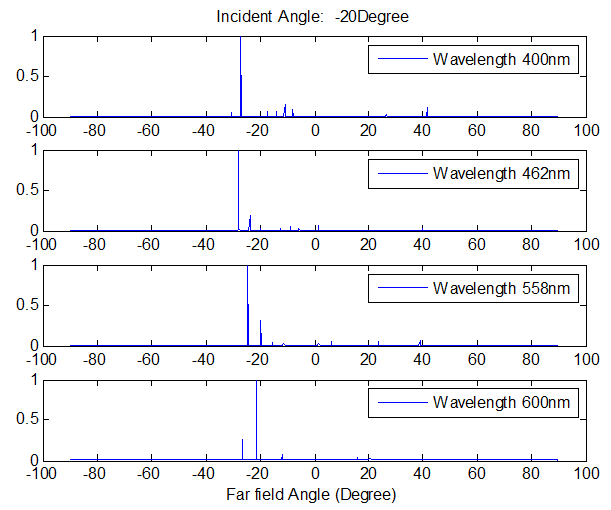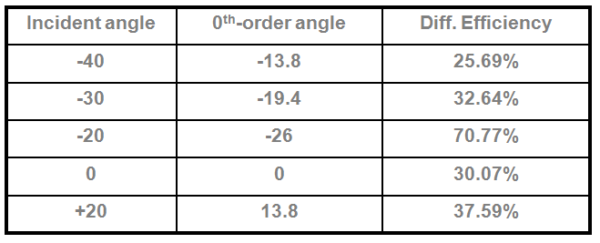Applications
- Light diffraction in the periodic or non-periodic geometry
- Photonic Crystal or semiconductor pixels
- Monochromators and spectrometers
- Holography
Diffraction Grating 3D Layouts
Benefits
- The dynamic near field can be simulated and displayed throughout the simulation. This gives us an in-depth understanding of the light wave interaction inside the diffraction element
- Additional tool boxes allow the simulation input and output to be linked to other optical tools like Zemax or Code V
- Advanced modeling can guide us to achieve the design goal quickly and efficiently. This will significantly reduce the product development cost
- Multiple grating layout parameters can be optimized using parameter sweep simulations
- Ability to explore various diffraction devices
In optics, a diffraction grating is an optical component with a periodic structure, which splits and diffracts light into several beams traveling in different directions. There are two ways to design the periodic structure with OptiFDTD : The PBG editor enables us to design an arbitrary periodic lattice in 1D, 2D or 3D and Visual Basic scripting which allows us to code the periodic relation and element shapes.
OptiFDTD provides several shapes to fill in the grating elements. After we finish the layout creation, the next step is to set the incident wave properties: A time domain incident wave can be either a CW wave or a laser pulse which covers a relatively broad band. The user can also select a transverse beam pattern that can be a waveguide modal field, Gaussian beam, plane wave or user defined wave with various polarization properties.
The third step is to set the output field detector by which we can observe the near field pattern and perform the far-field analysis. Other simulation parameters and boundary conditions can be manually or automatically set.
Below is a dynamic near field pattern for a silver binary grating at different incident angles.
After the simulation, a steady state near field can also be observed in the field detector.
Based on the near field properties, the far field transform tool is provided within the OptiFDTD software. The diffraction field angle and efficiency can then be evaluated from the far-field pattern.


